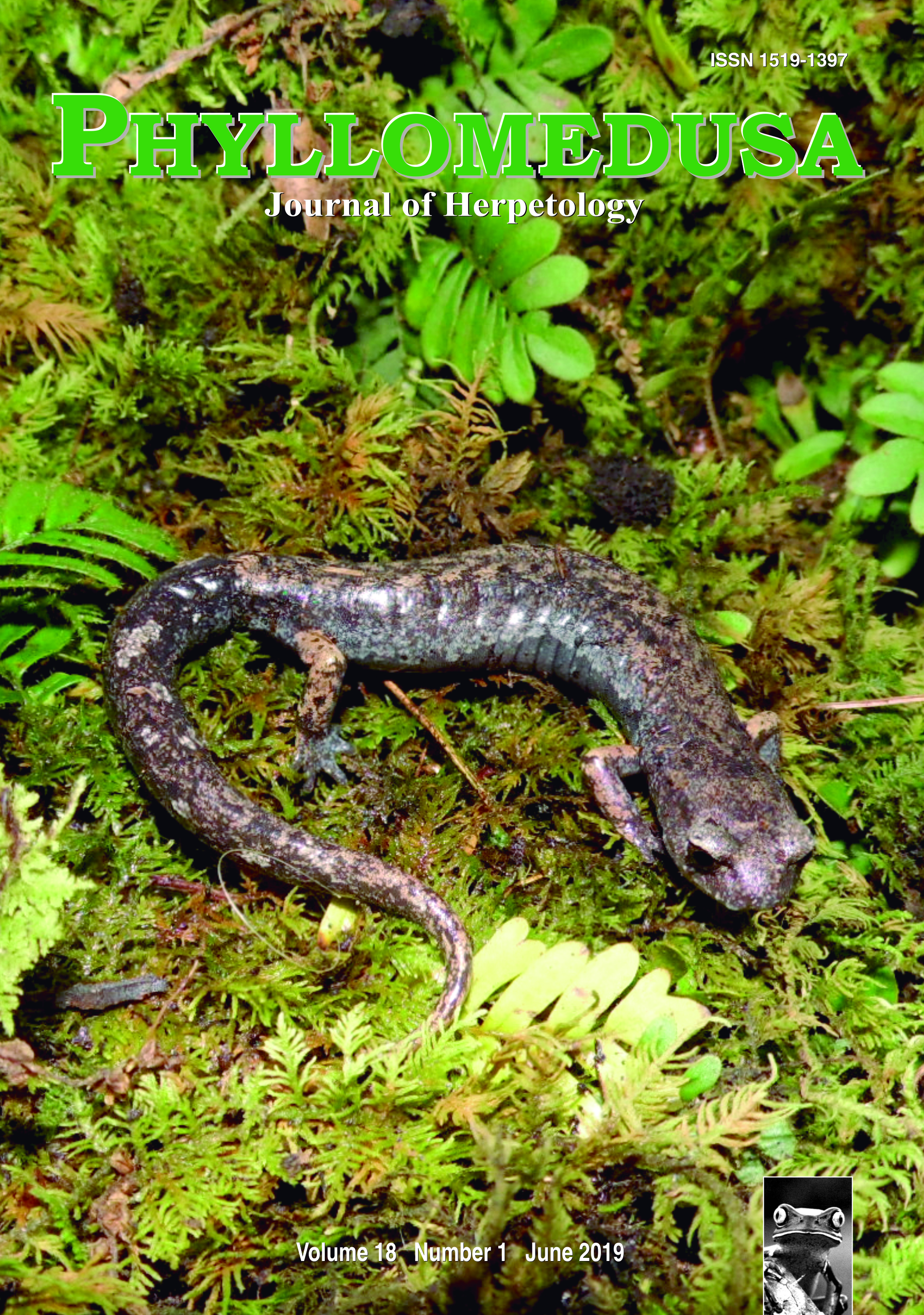Dietary resource partitioning among age-sex classes of Agama agama (Squamata: Agamidae) assessed by fecal pellet analysis
DOI:
https://doi.org/10.11606/issn.2316-9079.v18i1p63-75Keywords:
diet, lizards, Nigeria, savannah, season, West AfricaAbstract
Dietary resource partitioning among age-sex classes of Agama agama (Squamata: Agamidae) assessed by fecal pellet analysis. Dietary analysis is critical to understand the ecological roles of lizards, especially of species of Agama that are colonizing continents and islands from which they were previously absent. The foraging habits of four groups—viz., adult females, adult males, and young and juveniles (of both sexes)—of Agama agama in Nigeria were observed to assess the diet of the lizards and the contribution of the diet to separating age-sex classes. The claim that fying arthropods are less likely to be eaten by lizards was tested, and the hypothesis of dietary opportunism was explored. Sets (3–5 pellets) of 1453 fecal pellets collected during a 2-yr period were linked to individual lizards. Multivariate discriminant analysis of individual food items showed 61% lizards were correctly classifed to age-sex. However, items pooled into composite food groups, yielded fewer (43%) correctly classifed lizards. Cluster Analysis indicated that individual foods were less common (46.3%) to lizard classes than composite foods (76.1%). Thus, lizard age-sex classes are better differentiated when prey item is identifed at the lowest possible taxonomic level. Overall, arthropods are the largest, composite food for all lizard classes but, the relative amounts of different arthropod taxa varies signifcantly, and is highest for Diptera. Other foods include plants, seeds, and non-arthropod animal material. Differing coeffcients of variation accentuate dietary disparities within classes. Proportions of most individual and composite diet items differ signifcantly by month, season, and study site. Although consumed by lizards, no traces of white mold were found in the feces; this underscores the value of combining fecal analysis with surveillance of foraging habits of Agama agama.



 Impact Factor (JCR): 0.400
Impact Factor (JCR): 0.400 CiteScore: 1.0
CiteScore: 1.0